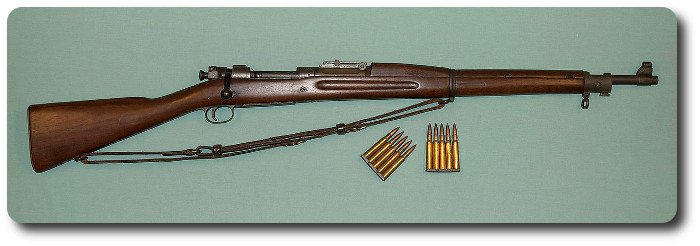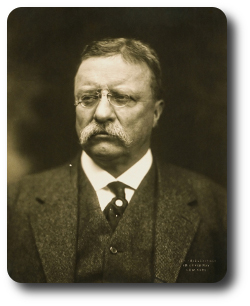Topic: Cold Steel

Roosevelt on Bayonets
The President's Personal Test of a Bayonet Newly Invented and Submitted for His Approval
 Boston Evening Transcript, 20 April 1905
Boston Evening Transcript, 20 April 1905
Springfield armory personnel and others will have a special interest in the following story sent from Washington to the Cleveland Plain Dealer.
Since the departure of President Roosevelt for Texas a story has leaked out illustrating anew his versatility and physical energy. General Frazer of the British Army, who was a guest at the White House not so long ago, told of the incident after leaving Washington as the most remarkable thing he had so far observed in the United States. It seems that General Frazer sat in the President's office on a day when General Crozier, head of the Army Ordnance Corps, brought in his new rod bayonet to show the President.
General Crozier was responsible for the rod bayonet, which was simply a modification of the end of the new Springfield rifle's cleaning rod, about the thickness of a lead pencil, with a rounded, sharpened point. This bayonet end on the cleaning rod could be pulled out 12 or 14 inches, clamped in place, and there you were. The soldier needed no longer to carry a bayonet at his side. He could tote an intrenching spade instead.
When officers, who had been observing the war in Manchuria, returned with their reports of bayonet charges by Jap and Russian, a storm of criticism developed against the Crozier rod bayonet. Army officers wanted to retain the present substantial savage-looking knife bayonet. The manufacture of the new Springfields, all equipped with rod bayonets, was stopped while the question hung in abeyance. President Roosevelt threw the weight of his influence in the scale against the new rod bayonet. On the morning of which General Frazer told his friends General Crozier had brought one of the new Springfields, equipped with the rod bayonet, to show the President how practical a tool it was. General Crozier had a pine plank with him and he drove the rod bayonet several times through the plank with the triumphant air of a magician doing a card trick.
"There!" he said. "You see."

"I don't know whether I do or not," said the President, and took a hand himself. He drove the bayonet through the pine plank, but that did not satisfy him. He then demanded to know how the rod bayonet would stand up in a contest against a soldier equipped with the present knife bayonet. General Crozier insisted that the man armed with the knife bayonet would have no advantage.
"Let's see about that," exclaimed the Chief Executive.
He sent a messenger out for a Krag-Jorgensen rifle equipped with a knife bayonet. It came.
"Now you stand over in that corner, Crozier," directed the President. "I'm attacking you, you know."
Swinging the heavy Krag in practised hands, the president danced across to the chief of the ordnance corps, who held his rifle loosely in his hands and looked at him in a rather bewildered way. It is a rather sudden shock to find yourself involved in a bayonet fight with the Chief Executive of the Government.
"Stand up to it, Crozier!" cried the President. "On guard, man!"
General Crozier thereupon fell into position and guarded. The President made half a dozen quick passes with his rifle, then a wild whoop. There was a clatter of steel, and half of Genetral Crozier's rod bayonet fell to the floor. With an old fencing trick, the President had caught it under his bayonet's guard and over its blade. With one twist of his powerful wrists he had broken the rod bayonet in halves.
"I don't think your rod bayonet is much good, Crozier," he said with a laugh. General Crozier could not think of anything more to say just at that time. He stood, bewildered, with his rifle in his hands and looked from the jagged remains of his bayonet on the end to the half of it lying on the floor.
Pretty soon he departed.
It made a great hit with General Frazer of the British Army. "Now there is a man for you," he told his friends. "My word! Think of it! That's the kind of President to have, a man who not only understand technical military business, but who can stand up and demonstrate his views. My word! But he's a man!"
The readers have probably noticed recent despatches that told not only of the knife bayonet's retention, and the rejection of the Crozier device, but also of the decision to materially lengthen this knife bayonet so that the reach in cold steel of the American soldier may equal that of any soldier in the world.

